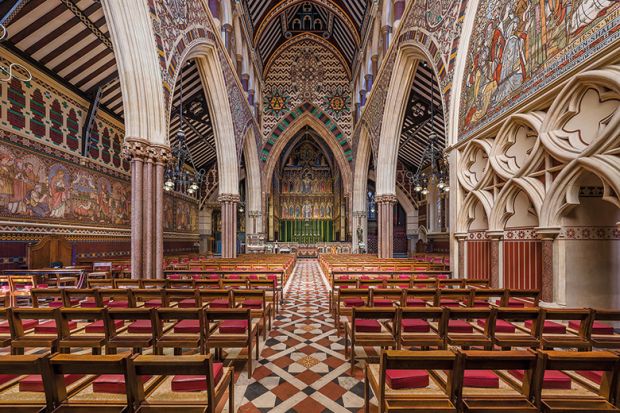Throughout the English-speaking world exists a vast legacy of Victorian ecclesiastical architecture. In these islands, there are few ancient churches that were not altered in some way by the Victorians, some “restored” within inches of their lives and others saved from decay just in time. Many new Victorian churches fell from critical favour early in their lives, but some, such as William Butterfield’s All Saints in Margaret Street, London, were glorious creations, glowing with the colours of the materials used, and the greatest of them were buildings of startling originality, yet firmly based on scholarship, historical allusion and symbolism. They were not mere preaching-boxes: they spoke eloquently of revived rituals, provided dignified settings for worship and conveyed theological ideas that impacted powerfully on the emotions. This book explores that 19th-century revolution, largely led by Cambridge Ecclesiologists and Oxford Tractarians, that profoundly altered the ways in which buildings were perceived, experienced and even understood: it was a revolution that has been largely forgotten.
An England without its parish churches would no longer be England and those we see today, set in churchyards in which the headstones survive depredations by misguided deniers of death, with associated lychgates, Gothic Revival schools and parsonages, speak of sacred spaces, the very hearts of communities, yet far too many are under threat in an increasingly secular age when maintenance, repair and even use become severe problems. One of the chief difficulties now is that to most people a church is beyond their ken. In my own experience, attempting to teach students about ecclesiastical buildings was extremely difficult, given that most of them had never even been in a church or cathedral in their lives.
Orgies of destruction of what were unfortunately termed “Victorian monstrosities” in the 1960s led to the removal of screens from St Chad’s Cathedral, Birmingham (designed by Augustus Pugin), and Hereford Cathedral (designed by George Gilbert Scott – it can now be seen in its glory in the Victoria and Albert Museum), and the emasculation or obliteration of rather too many 19th-century churches.
If some Victorian opinion was concerned about profusions of lace and pea-soupers of perfumed incense in the chancels as worrying signs of feminisation (and there was certainly a whiff of High Camp about some of the more theatrical manifestations of Ritualism), a tendency from the 1960s to make church interiors resemble hospital waiting rooms should have aroused much greater concern, with its associated infantilism, exacerbated by banal orders of service and other incoherent attempts to “appeal to youth” with ephemeral attractions of popularist “culture”. The dignity of the Latin Mass or the noble literature of Cranmer and his associates were jettisoned in a feeble exercise that has not brought in the crowds.
An understanding of the past through built fabric might help, and this book, by a historian and priest, is an eloquent plea for just that, although it would have been more impressive if murky reproductions of images and misspellings of names such as Schinkel had been avoided. But William Whyte has raised important issues, with much on which to ponder regarding the future of ecclesiastical buildings, for a society that has abandoned much that was responsible for creating beautiful, meaningful places could be regarded as worryingly shallow.
James Stevens Curl is the author of several works on Victorian churches.
Unlocking the Church: The Lost Secrets of Victorian Sacred Space
By William Whyte
Oxford University Press, 272pp, £18.99
ISBN 9780198796152
Published 12 October 2017




